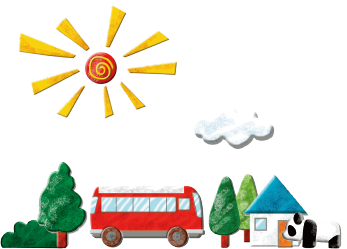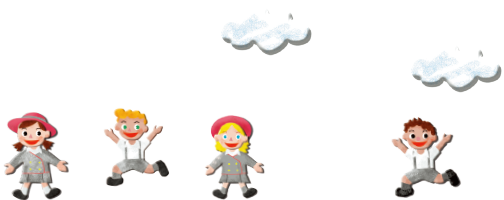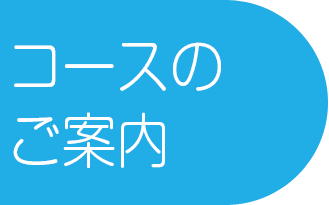イマージョン教育と
バイリンガル教育について
About Immersion and Bilingual Education
イマージョンとは何ですか?
- イマージョンとは、子どもたちが第二言語(本園の場合は英語)を使って学ぶことを意味します。
- 英語は単なる教科ではなく、かず、制作(アート)、読書、遊びなどの日常的な活動の中で学びに使用される言語です。
- カリキュラムは、イマージョンプログラム以外のプログラムと同じ学習目標に従っていますが、授業や教材は英語環境に合わせて調整されています。
- 研究によると、幼い子どもは、意味のある双方向の体験を通じて言語を特に上手に習得する傾向があります。
- フレッド・ジェネシーやジム・カミンズなどの専門家による研究では、よく設計されたイマージョンプログラムに参加した子どもたちは、次のような成果を上げていることが示されています。
- 第二言語の高いレベルの習得
- 学業面で同年代の子どもたちに遅れをとらない、あるいはそれを上回る成績
- 第一言語の能力を長期的に維持、強化
- イマージョンは、問題解決、柔軟な思考、創造力などの認知能力の発達をサポートします。
What Is Language Immersion?
- Language immersion means children learn school subjects through a second language—in our case, English.
- English is not just a subject—it’s the language used for learning during daily activities such as numeracy, art, reading, and play.
- The curriculum follows the same learning goals as non-immersion programs, but lessons and materials are adapted to the English-language setting.
- Research shows that young children are especially good at learning languages through meaningful, interactive experiences.
- Studies by experts like Fred Genesee and Jim Cummins show that children in well-designed immersion programs:
- Achieve high levels of proficiency in the second language
- Keep up with or even outperform peers in academic content
- Maintain and strengthen their first language skills over time
- Immersion supports cognitive development, such as problem-solving, flexible thinking, and creativity.
本園が真のイマージョンプログラムである理由
- 1日の保育の 50% 以上が英語で行われ、イマージョン教育の世界基準を満たしています。
- 子どもたちは、かず、読書、制作(アート)、日常生活のあらゆる場面で、1日中英語で学びます。
- 英語は単なる教科ではなく、思考、探究、コミュニケーションの主な言語です。
- 各クラスには2人の保育者がいます:英語母語保育者と日本人保育者が協力し、バイリンガル能力の成長をサポートします。
- 園児は英語で学ぶ中で、日本語の言語スキルも継続的に発展させます。
- 私たちの目標は、子どもたちが両言語で自信を持って学び、能力を発揮できる学習者になることです。
What Makes Our Kindergarten a True Immersion Program
- More than 50% of the school day is taught in English, meeting the global standard for immersion education.
- Children learn in English throughout the day—during numeracy, reading, art, and daily life activities.
- English is not just a subject—it is the main language used for thinking, exploring, and communicating.
- Each class has two teachers: one English-speaking and one Japanese-speaking, working together to support bilingual growth.
- Students continue to develop their Japanese language skills while learning in English.
- Our goal is to help children become confident, capable learners in both languages.
なぜ子どもにとってイマージョンが重要なのか
- 子どもがバイリンガルでバイカルチャー(二文化的)になり、グローバルな世界で成功するための準備を整えます。
- 英語と日本語の両方で思考し、学び、アイデアを表現する能力を養います。
- 2つの言語を通じてコミュニケーション、問題解決、批判的思考スキルを強化します。
- イマージョンの効果を完全に実感するまでには2~3年かかります—忍耐が鍵です!
- 幼稚園から小学校までプログラムを継続することが、最も堅固な基盤を築きます。
- 中学校でのイマージョン継続は、高度な英語スキルを維持し発展させます。
Why Immersion Matters for Your Child
- Helps children become bilingual and bicultural, ready to succeed in a global world.
- Builds the ability to think, learn, and express ideas in both English and Japanese.
- Strengthens communication, problem-solving, and critical thinking skills through two languages.
- Takes 2–3 years for the full benefits of immersion to become visible—patience is key!
- Staying in the program through kindergarten and elementary gives the strongest foundation.
- Continuing immersion in secondary school helps maintain and build advanced English skills.
イマージョン教育に関するよくある誤解
Common Myths About Immersion Education
誤解 1:「子どもの日本語の学びが遅れてしまう。」
真実:子どもたちは英語を学ぶ過程で日本語のスキルも継続的に成長します。実際、バイリンガルになることは、母国語を含む言語能力全体を強化する傾向があります。
Myth 1: “My child will fall behind in Japanese.”
Truth: Children continue to grow in their Japanese language skills while learning in English. Infact, becoming bilingual often strengthens their overall language ability, including their native language.
誤解 2:「同時に2つの言語を学ぶと、子どもが混乱する。」
真実:幼少期の子どもは言語学習の天才です。複数の言語を自然に習得し、適切な文脈で使い分けることができます。
Myth 2: “Learning two languages at once will confuse my child.”
Truth: Young children are natural language learners. They can easily pick up multiple languages and learn to use them in the right context.
誤解 3:「イマージョンは英語を既に話せる子どもだけを対象としている。」
事実:イマージョン教育は、あらゆる言語背景を持つ子どもを対象に設計されています。多くの子 どもは英語をほとんどまたは全く話せない状態で始まり、日常の活動を通じて自然に習得します。
Myth 3: “Immersion is only for children who already speak English.”
Truth: Immersion is designed for children from all language backgrounds. Many start with little or no English and learn it naturally through everyday activities.
誤解4:「イマージョン教育を受ける子どもは、基本的な学業が疎かになる。」
事実:イマージョン教育を受ける子どもは、同年代の仲間と同じカリキュラムを学びます。彼らは算数、理科などの教科を英語を通じて学びます。英語の代わりに学ぶのではありません。
Myth 4: “Immersion students miss out on core academics.”
Truth: Immersion students follow the same curriculum as their peers. They learn math, science, and other subjects through English—not instead of them.
誤解5:「イマージョン教育は単に英語の授業が増えるだけだ。」
事実:イマージョンとは、英語が学習の言語として使用されることを意味します——単なる科目ではありません。子どもたちは、英語を使って探究し、疑問を投げかけ、学習のあらゆる分野で成長します。
Myth 5: “Immersion just means more English classes.”
Truth: Immersion means English is used as the language for learning—not just a subject. Children use English to explore, inquire, and grow in all areas of learning.
誤解 6:「子どもがすぐに流暢にならないなら、イマージョンは機能していない」
事実:言語学習には時間がかかります。子どもが話す前に静かに観察するのは正常なことです。この「沈黙期」は健康な言語発達の一部です。
Myth 6: “If my child isn't fluent right away, immersion isn't working.”
Truth: Language learning takes time. It's normal for children to observe quietly before speaking. This “silent period” is part of healthy language development.
誤解7:「イマージョンは、進んだ生徒や才能のある生徒のためだけだ。」
事実:イマージョンはすべての学習者に利益をもたらします。適切な支援があれば、異なる学習スタイルや背景を持つ子どもたちも、言語豊かな環境で成長できます。
Myth 7: “Immersion is only for advanced or gifted students.”
Truth: Immersion can benefit all learners. With the right support, children of different learning styles and backgrounds can thrive in a language-rich environment.








